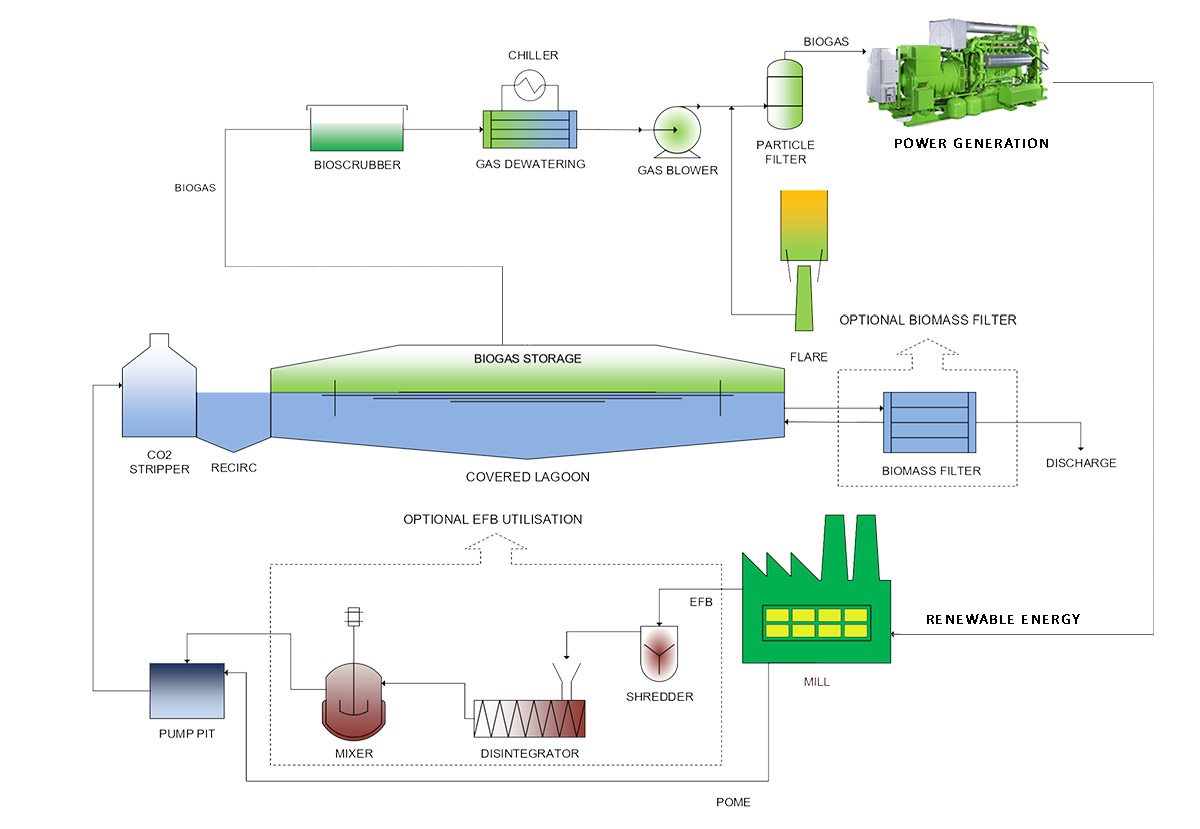Digester Technology
Understanding not only how biogas is produced but also how to maintain a plant during long-term operations are the keys to a successful project. Organics has designed and installed many projects and has many hours of operation as testament to the efficiency of our own operation. Digesters can be of several different types and each has its own particular advantages and disadvantages.
Lagoon Digesters
Important to the long-term success of any AD project is the correct design of the chosen solution. This can only be implemented once all key data is reliably obtained. Such data will include a soil-survey and definition of any site-specific factors which may need to be taken into consideration in the construction of the facility.
The technology recommended by Organics is centred around the anaerobic digestion process known as the Covered Lagoon Anaerobic Reactor. This is an effective method of reducing COD and BOD as well as producing a valuable, methane rich biogas which can be used as a fuel to generate energy.
Covered Lagoon Anaerobic Reactor (CLAR)
The Covered Lagoon Anaerobic Digester is used for high volume flow rates such as is encountered in industrial processes such as the production of tapioca or palm-oil mill effluent (POME). Traditionally, these processes resulted in a liquor that was a source of contamination when released to the environment. Capturing the wastewater in a digester means that not only is the water treated correctly but the biogas can be used as a fuel for energy production.
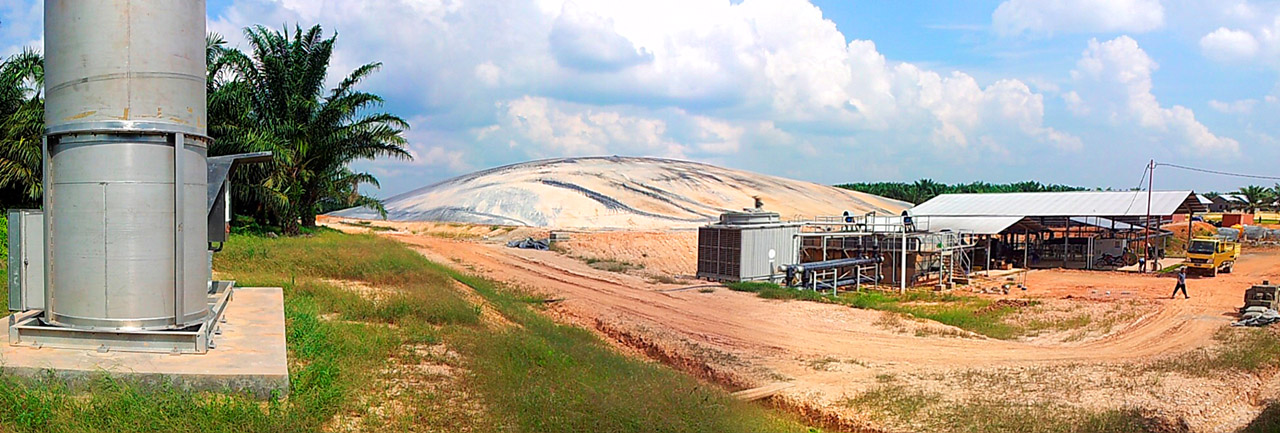
Process Description
Liquid effluent is pumped into the lagoon. via an internal distribution system. Although not commonly a requirement, it may be necessary to adjust pH or attend to high solids concentrations in the buffer lagoon.
Lagoon systems are designed to hold liquors for fifteen to twenty days during which time carbonaceous material is broken down into various gases, including methane and carbon dioxide. This gas is drawn off from the anaerobic digester in a controlled manner.
Gas is generated by the anaerobic digestion of the organic components contained within the wastewater and is collected under the impermeable cover ready for transfer to the treatment plant.
Upon exit from the anaerobic digester, the biogas must be cleaned of hydrogen sulphide. This gas is corrosive, highly toxic and can damage power generation equipment. The removal of hydrogen sulphide is normally undertaken by means of a bio-scrubber.
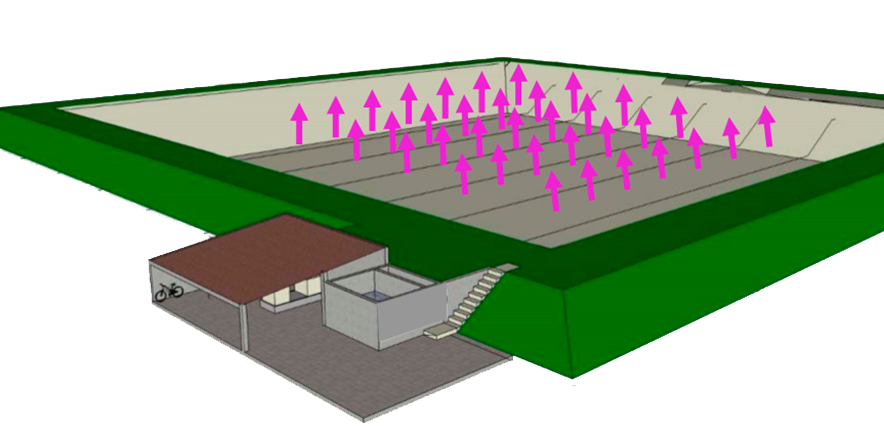
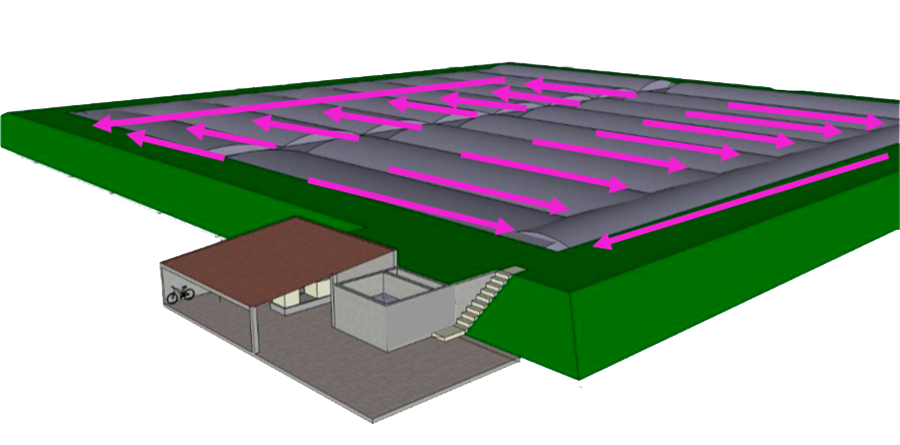
Continuous Movement Anaerobic Reactor (CMAR)
The CSTR (Continuously Stirred Tank Reactor) or CMAR (Continuous Movement Anaerobic Reactor) has a much smaller footprint than the lagoon. It has a moderate rate of digestion, which is enhanced by filtering and returning biomass from the exit into the reactor. This type of system is ideal for agricultural biomass such as animal slurries. It can also be used with the organic fraction of Municipal Solid Waste (MSW) although the material must be efficiently separated prior to injection into the anaerobic digestion process.
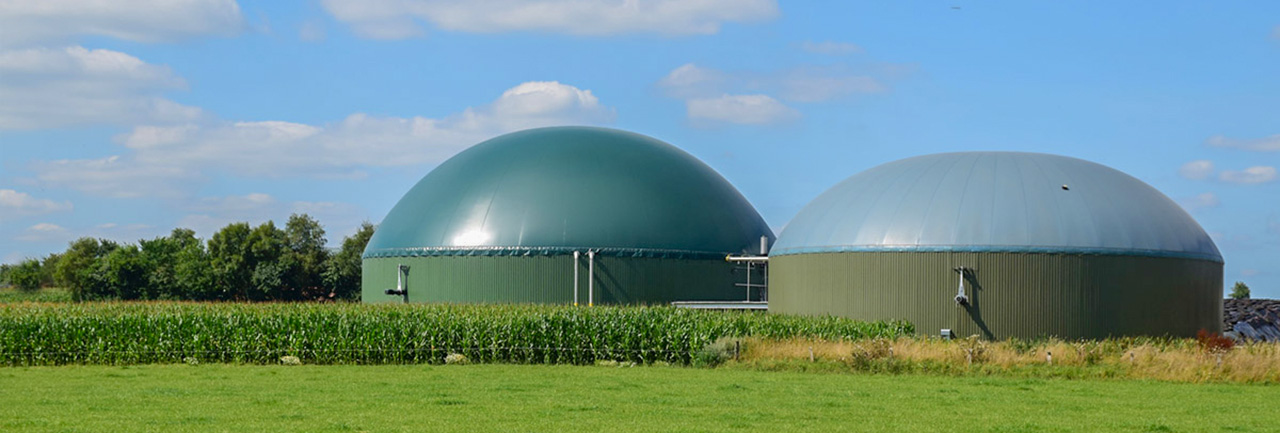
Process Description
Liquid effluent is pumped into the tank via a reception pit and pump. It may be necessary to adjust pH or attend to high solids concentrations prior to injection into the system.
CMAR systems are designed to hold liquors for eight to ten days during which time organic material is broken down into various gases, including methane and carbon dioxide. This gas is drawn off from the anaerobic digester in a controlled manner and either used in power generation or flared. Prior to use, the gas must be cleaned of H2S.
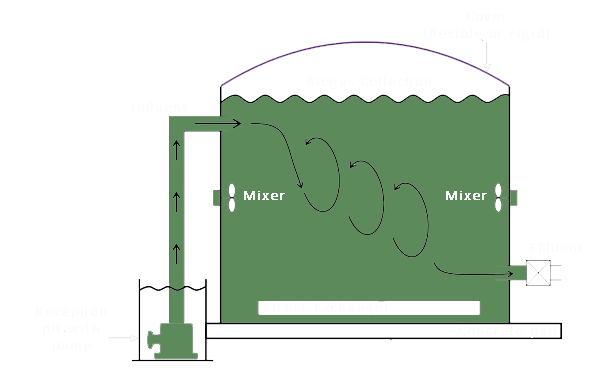
Advantages of Anaerobic Digestion
Reduction of methane to the atmosphere
Methane is a major greenhouse gas. Current disposal practices for slurry and food residues cause methane to be released through natural processes. AD exploits this process so that the gas can be used as a fuel. A well-managed AD scheme will aim to maximise methane generation, but not release any gas to the atmosphere.
Energy Production
AD provides an energy source with no net increase in atmospheric carbon. Using fossil fuels for energy production creates carbon dioxide which causes climate change, resulting in a warming of the planet. By replacing energy from fossil fuels, AD can help reduce overall quantities of carbon dioxide in the atmosphere and reduce dangers of climate change.
Displacement of fossil fuels
The feedstock for AD is a renewable resource, and does not deplete finite fossil fuels. Energy generated through this process can contribute towards the reduction for the demand for fossil fuels and reduces impact from emission to the environment. The use of the fibre and liquor as a contribution to fertiliser regimes can in turn reduce fossil fuel consumption in the production of synthetic fertiliser.
Nutrient Recycling
AD products (liquid fertiliser and fibre), when applied correctly to agricultural crops, can reduce the need for synthetic fertilizers within an overall fertilizer programme and reduce runoff to rivers of highly toxic ammonia that can decimate fish populations.
Land Management
Poor disposal of animal slurries can cause land and ground water pollution. AD meets regulatory requirements and site license conditions, creating an integrated management system which reduces the likelihood of this happening and reduces the possibility of fines and sanctions being imposed for such pollution.
Odour Control
Anaerobic Digestion can reduce odour from farm slurries and food residues by up to 80% thus obviating the requirement for expensive odour control perfume systems or for upsetting Mrs. Murphey’s afternoon lunch party. AD is carried out under controlled conditions that ensure that all generated gases are contained within a closed tank and only released either to be used as a fuel for energy generation or burned under controlled conditions.

ORGANICS GROUP
Please consult the following pages before using our site:
Organics Privacy Policy
Data Privacy and Protection Policy
CONTACT
Please contact us for further information
SOCIAL MEDIA

